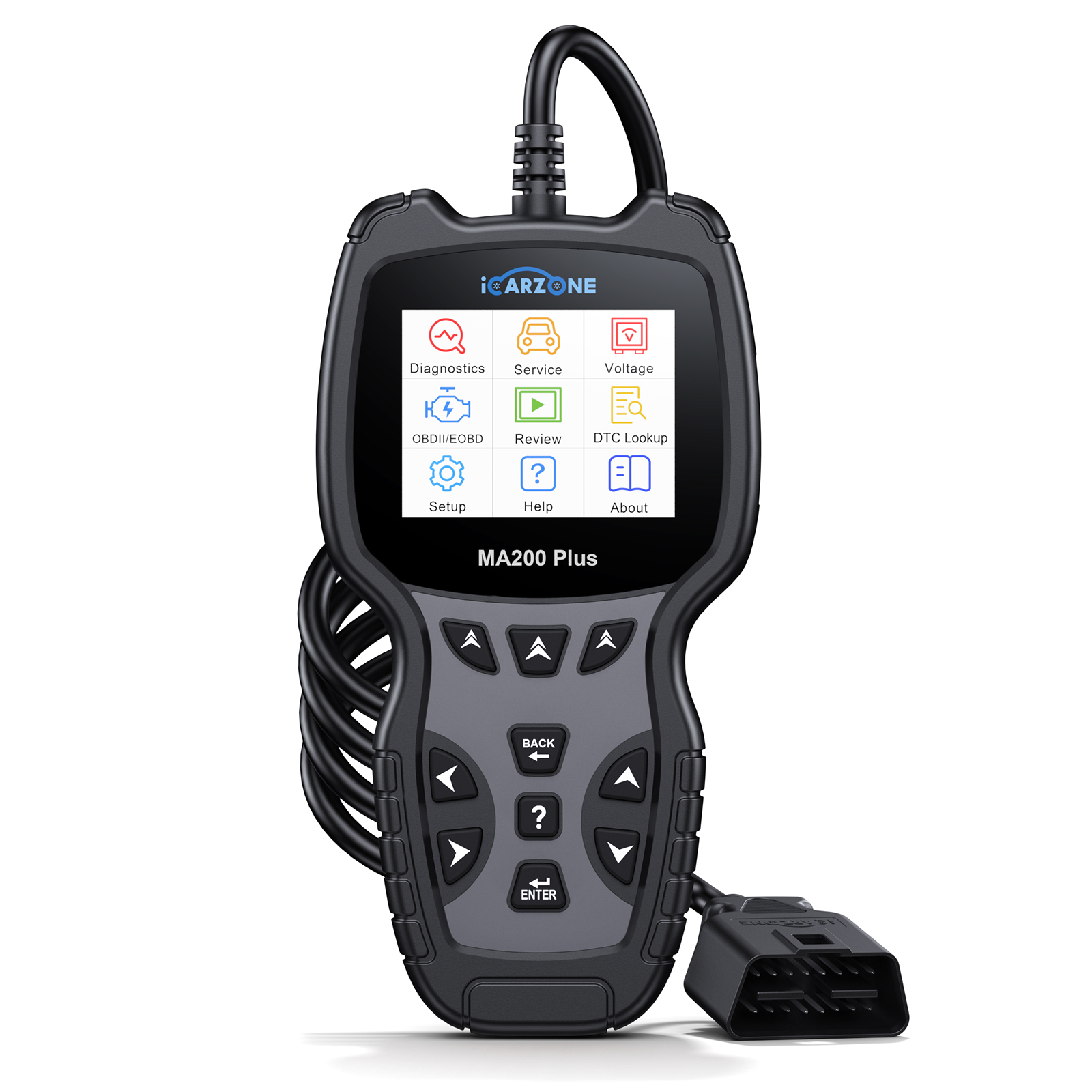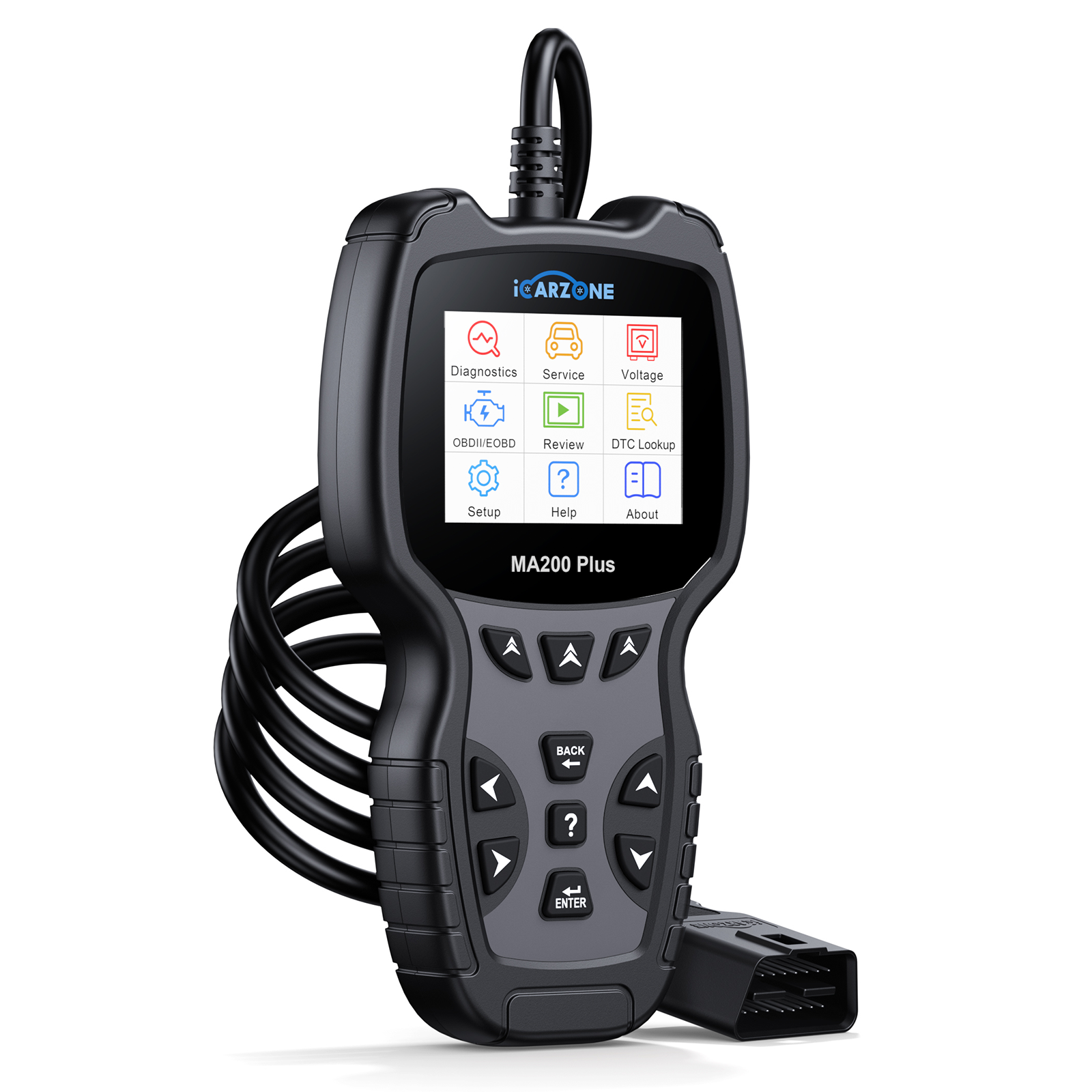P0137: Oxygen Sensor Circuit Low (Bank 1, Sensor 2) – Diagnose & Fix with MA100

P0137: O₂ Sensor Circuit Low Voltage (Bank 1 Sensor 2)
Resolve P0137 in Chevrolet Silverado 1500. Learn causes, symptoms, and fixes for the downstream oxygen sensor (Bank 1 Sensor 2) using the MA100 diagnostic tool.
Get MA100 Now1. What is P0137?
P0137 is a Diagnostic Trouble Code that indicates Oxygen Sensor Circuit Low Voltage (Bank 1 Sensor 2). Bank 1 Sensor 2 is the downstream O₂ sensor located after the catalytic converter on the side of the engine containing cylinder 1. The sensor monitors post-cat oxygen levels and helps the ECM verify catalytic converter efficiency. P0137 triggers when the ECM detects the downstream O₂ sensor voltage is consistently lower than expected (typically near 0.1–0.2V) for a defined period.
Why It Matters for Chevrolet Silverado 1500
A low-voltage downstream O₂ sensor can indicate sensor failure, wiring problems, an exhaust leak, or catalytic converter issues. For Silverado owners—especially those towing—this can cause failed emissions tests, increased fuel consumption, and possible trigger of additional codes (like P0420). Diagnosing Bank 1 Sensor 2 correctly avoids unnecessary part replacement and restores proper emissions monitoring.
2. Common Causes in Chevrolet Silverado 1500
P0137 often stems from issues that affect the downstream O₂ sensor signal. Common Silverado-specific causes include:
- Failed oxygen sensor (Bank 1 Sensor 2) — sensor degrading with age or contamination (oil/antifreeze residues), causing permanently low voltage outputs.
- Wiring or connector faults — damaged harness, corroded pins, or shorts to ground/power; common where harnesses route near exhaust or suspension components.
- Exhaust leaks upstream of the downstream sensor — leaks between engine and sensor can introduce excess oxygen and lower sensor voltage.
- Catalytic converter degradation — if the converter is not functioning, downstream oxygen readings may stay low and not switch like a healthy system.
- Rich/lean fuel conditions — persistent lean conditions (e.g., MAF issues, vacuum leaks) can bias downstream readings low.
3. Key Symptoms in Chevrolet Silverado 1500
Owners typically notice one or more of these P0137-related symptoms:
- Check Engine Light with codes such as P0137 or P0420
- Poor fuel economy (noticeable MPG drop)
- Failed emissions test / Smell of rich fuel from exhaust (if converter affected)
- Rough idle or hesitation under light throttle (less common for downstream-only faults)
- Persistent downstream O₂ voltage stuck low (0.1–0.2V) when monitored via MA100
4. Silverado 1500 Models Prone to P0137
While P0137 can occur across model years, older sensors and heavy-use trucks (towing, diesel/gas conversion differences) show higher incidence:
- 2014–2019 Silverado 1500 (higher mileage units) — typical oxygen sensor wear
- 2020–2024 Silverado 1500 with heavy towing packages — exhaust stress and heat cycling
- Silverado 4.3L/5.3L/6.2L variants — sensor placement and exhaust routing affect failure patterns
Common TSBs for downstream sensor false readings often recommend wiring inspection and O₂ sensor replacement when applicable.
5. Diagnostic Steps (Silverado 1500 Focus) with MA100
Use MA100 to test the downstream O₂ sensor signal and verify whether the fault is sensor, wiring, or exhaust/converter related:
| Step | Action with MA100 | Silverado Goal | Pass/Fail Criteria |
|---|---|---|---|
| 1 | Full System Scan > Select "Chevrolet" > "Silverado 1500" > "Engine" | Confirm P0137 and check for related codes (P0420, P2196, etc.) | Pass: Single P0137 or P0137 + P0420 | Fail: Multiple upstream O₂ or fuel system codes |
| 2 | Live Data > "O₂ Sensor Voltage (Bank1, Sensor2)" & "O₂ Heater Status" | Observe voltage; downstream should switch slowly and mirror catalytic activity (typical range 0.1–0.9V) | Pass: Voltage varies with catalyst load | Fail: Voltage stuck near 0.1–0.2V (low) |
| 3 | Advanced Diagnostics > "O₂ Sensor Heater Test" > "Resistance Check" | Verify heater circuit integrity and sensor resistance | Pass: Heater draws expected current and resistance in spec | Fail: Open heater or wrong resistance |
| 4 | Data Logging > Short Drive Cycle > Monitor downstream switching vs. upstream | Confirm downstream follows expected pattern after catalyst (not flatlined) | Pass: Downstream shows switching amplitude | Fail: Flat low voltage indicates sensor or upstream issue |
| 5 | Physical Inspection > Check exhaust for leaks, wiring harness, and connector corrosion | Root-cause wiring or leak detection | Pass: No leaks/corrosion | Fail: Repair required (wiring/exhaust) |
Case Example: A 2017 Silverado showed P0137 with downstream voltage stuck at 0.12V. MA100 live data confirmed heater OK but voltage flatlined. Visual wiring inspection found chafed insulation near the hanger; after repairing the harness and replacing the sensor (OEM part #126xxx—replace with correct OE number for your engine), normal downstream switching returned and P0137 cleared.
Diagnose Silverado P0137 with MA1006. Fixes & Execution for Chevrolet Silverado 1500
Fix depends on identified root cause. MA100 supports live data, heater tests, and resistance checks to avoid unnecessary parts replacement:
- Replace Bank 1 Sensor 2 (Downstream O₂ sensor) — If sensor fails voltage/heater tests, install OEM-equivalent O₂ sensor. After replacement, clear codes and perform drive cycle monitoring with MA100.
- Repair wiring & connectors — Fix chafed harness sections, replace corroded pins, and apply dielectric grease to connectors to prevent future corrosion.
- Fix exhaust leaks — Seal or repair leaks upstream of downstream sensor (manifold, flange, or gasket) that can bias readings low.
- Catalytic converter inspection — If downstream sensor is correct but converter degraded, P0420 may accompany P0137; inspect/repeaters or replace as necessary.
- Address fuel/air issues — Correct MAF, vacuum leaks, or injector faults causing persistently lean conditions that influence downstream voltage.
Silverado-Specific Workflow
- Always confirm MA100 live data before replacing sensors — many P0137 cases are wiring/exhaust related, not failed sensors.
- Check heater circuit first on cold-start failures; heater faults can trigger readiness and emissions issues.
- After repairs, perform a full drive cycle and re-check readiness monitors with MA100 to ensure the ECM resets and emissions monitors run.
7. Repair Costs & Safety Tips for Silverado 1500
OEM Downstream O₂ Sensor: $60–$220 (varies by engine & supplier)
Wiring Repair Kit / Connector: $10–$40
Exhaust Leak Repair: $50–$300 (patch/gasket to flange replacement)
Professional Sensor Replacement (labor included): $120–$320
Critical Safety Precautions
- Work on the exhaust only when cooled—hot components can cause severe burns.
- Use proper oxygen sensor sockets to avoid damaging sensor hex flats.
- Ensure vehicle is securely lifted/supported when accessing exhaust components.
- Clear codes and complete at least one drive cycle using MA100 to confirm repair success before declaring the issue resolved.
8. Preventive Maintenance for Silverado 1500 P0137
Reduce P0137 risk with these steps:
- Inspect O₂ sensor wiring during routine service intervals—protect harnesses near exhaust routing.
- Replace upstream sensors or MAF as recommended to avoid skewed fuel trims that stress downstream sensors.
- Avoid oil leaks and coolant leaks that can contaminate sensors and catalyst surfaces.
- Use MA100 to run O₂ sensor heater and voltage checks annually on higher-mileage Silverados.
9. Frequently Asked Questions
No—sensor failures are typically covered under powertrain/emissions warranty if within the warranty period. Always have dealer inspect if under coverage to preserve claims.
Yes—if the converter is not processing exhaust properly, downstream O₂ readings may stay low. P0137 can be a symptom of converter issues when paired with P0420.
Yes—MA100 supports live data and O₂ sensor heater tests across common Silverado engines; confirm vehicle compatibility on the product page.
1–2 hours for wiring/exhaust repairs; 0.5–1.5 hours to replace a downstream O₂ sensor (time varies by model & lift access).
10. Summary
P0137 (O₂ sensor circuit low voltage for Bank 1 Sensor 2) is common but typically straightforward to diagnose. Use MA100 to verify live downstream O₂ voltage, heater operation, and wiring integrity before replacing parts. Most P0137 cases resolve after sensor replacement, wiring repair, or exhaust/catalyst remediation. Addressing it promptly restores emissions performance and fuel economy—critical for Silverado owners who tow or carry heavy loads.
Diagnose P0137 with MA100
MA100 provides O₂ sensor live-data, heater tests, and resistance checks to quickly pinpoint whether P0137 is sensor, wiring, or exhaust related—save time and avoid unnecessary replacements.
Order MA100 TodayIf you want, I can swap the example image URLs to your Shopify asset links, or update OE part numbers for the specific engine in your listing—send me the engine code or image files and I'll update the blog HTML.









